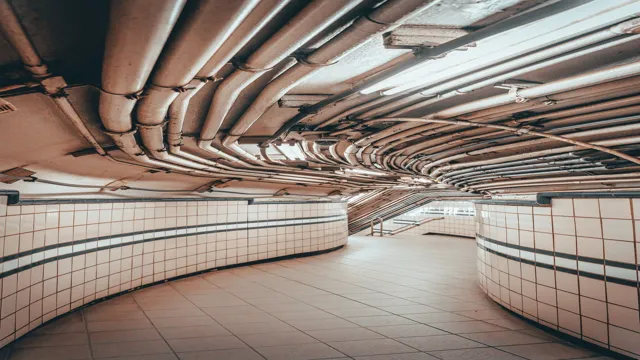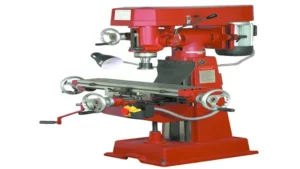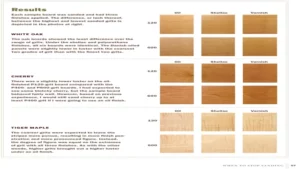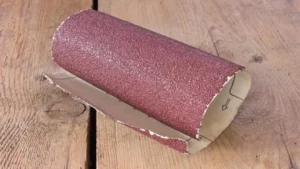If you’re not familiar with plumbing systems, it can be overwhelming to differentiate between different types of pipes. Especially when it comes to PVC (Polyvinyl Chloride) and DWV (Drain Waste Vent) pipes, the differences can get confusing. That’s why we’re here to help you understand.
PVC pipes typically get used for water supply systems and irrigation. On the other hand, DWV pipes are commonly found in building drains and sewer systems. Although they may look similar, the composition, usage, and even color of the pipes differ.
So let’s dive into the details of PVC Vs. DWV pipes and make the plumbing world a bit more understandable.
Introduction
So, you may be wondering, what exactly is the difference between PVC and DWV pipe? Well, it all comes down to their specific uses and properties.
PVC stands for polyvinyl chloride and is commonly used for applications where water or chemicals need to be transported. It is lightweight, durable, and resistant to corrosion and chemicals.
On the other hand, DWV stands for drain, waste, and vent and is typically used for the removal of wastewater from buildings. DWV pipe is more rigid and thicker than PVC, making it less likely to burst or leak under pressure.
It is important to understand the differences between these two types of pipes to ensure the proper usage and avoid any potential mishaps.
Explaining why PVC and DWV are important in plumbing
PVC and DWV are essential components in plumbing systems, and their importance cannot be understated. PVC, or Polyvinyl chloride, is a plastic material used in various plumbing applications due to its durability, flexibility, and resistance to corrosion and chemicals.
It is commonly used in water supply lines, drainage systems, and irrigation systems.
DWV, on the other hand, stands for Drain Waste and Vent, and it refers to the type of pipes and fittings designed to carry wastewater out of buildings and into the sewer system.
DWV pipes are installed vertically and horizontally and help to prevent foul odors caused by sewer gases from entering the home. Without these two essential components, plumbing systems would not function efficiently, and homeowners would experience leaks, clogs, and odor problems.
So if you are considering a plumbing project, remember to prioritize PVC and DWV components for a safe and effective plumbing system.
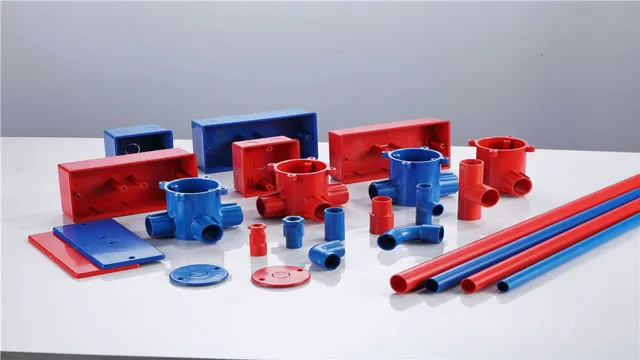
What is PVC Pipe?
PVC stands for polyvinyl chloride, a versatile plastic material that is used in a variety of applications, including as piping material. PVC pipes are commonly used to transport water and other fluids, as well as to create drainage systems.
DWV, on the other hand, stands for drain-waste-vent, and refers to a specific type of PVC piping that is designed for use in drainage and waste removal systems.
While both types of PVC pipes may look similar, there are differences in their construction and intended use. PVC pipes for plumbing purposes are typically thicker and stronger than those used for drainage, and are usually color-coded white or gray.
DWV pipes, on the other hand, are often black or white and are thinner and more flexible.
Understanding the differences between PVC and DWV pipes can help homeowners and contractors choose the best material for their specific plumbing needs.
Defining PVC Pipe
PVC (polyvinyl chloride) is a type of plastic material that is commonly used in various applications. One of its most popular uses is in the production of PVC pipes.
PVC pipes are a type of plastic pipe that is used in plumbing, irrigation, and other applications where the transportation of fluids is required.
They are a lightweight, durable, and affordable alternative to traditional metal pipes. PVC pipes come in different sizes and thicknesses, and they are highly customizable to fit the specific needs of a particular application.
They are also resistant to corrosion, chemicals, and other environmental factors, making them an ideal choice for both indoor and outdoor use.
So, if you’re looking for a reliable and cost-effective piping solution, PVC pipes are definitely worth considering.
Advantages and disadvantages of PVC Pipe
PVC Pipe has been gaining popularity in recent years due to its many advantages over alternative piping materials. PVC stands for polyvinyl chloride and is a synthetic plastic polymer that is used to create durable and long-lasting pipe systems.
One of the biggest advantages of PVC Pipe is its affordability and ease of installation. PVC pipe can be cut to size easily and can also be glued together without the need for expensive equipment.
Additionally, it is resistant to corrosion and its smooth surface means it does not accumulate sediment or other materials. However, PVC Pipe does have some disadvantages that must be considered.
It is not suitable for use with hot water or in high-pressure systems, and it can become brittle over time, especially in extreme temperatures. However, overall, PVC Pipe is a highly versatile and cost-effective solution that is ideal for a wide range of applications.
What is DWV Pipe?
DWV pipe stands for Drain Waste Vent pipe, which is a type of PVC pipe used in plumbing systems to remove waste and water from a building. Its main purpose is to transport waste and sewage out of the building to the sewer or septic tank.
The primary difference between DWV and regular PVC pipes is the thickness of the walls. DWV pipes are thicker because they need to withstand higher internal pressure caused by the flow of waste material.
Additionally, DWV pipes have a wider diameter and fewer individual fittings because they are meant to carry larger volumes of water and sewage.
In contrast, regular PVC pipes are used for a wider range of applications, such as irrigation, drainage, and electrical conduit.
To summarize, while both types of pipes are made of PVC, the thicker walls and wider diameter of DWV pipes make them specifically designed for moving sewage and waste materials in plumbing systems.
Defining DWV Pipe
DWV pipe stands for Drain, Waste, and Vent pipe. It is a specific type of PVC pipe that is designed to handle non-pressure plumbing systems. In simpler terms, it is used to move wastewater and sewage away from your home, without any pressure.
This type of pipe is also used for venting plumbing systems, which prevents the buildup of harmful gases and maintains the balance of pressure in the plumbing system.
DWV pipes are typically white in color and come in a variety of sizes to fit your specific plumbing needs. So, the next time you hear the term DWV pipe, you’ll know it’s not just any ordinary PVC pipe, but rather a specialized tool for plumbing systems.
Advantages and disadvantages of DWV Pipe
The Drain-Waste-Vent DWV) Pipe, is a type of plumbing pipe used to handle sewage, waste, and drainage systems. These pipes are typically made of PVC or ABS plastic and are designed to be lightweight and easy to install.
They come in many sizes, from small diameter pipes used for sink drains to large pipes used for main sewage lines.
DWV pipes are essential in any plumbing system as they facilitate the removal of waste and prevent the buildup of harmful gases. However, as with any plumbing material, there are both advantages and disadvantages to using DWV pipes. Advantages of DWV pipes include their affordability, durability, and resistance to chemicals.
They are easy to install and require minimal maintenance, making them an ideal choice for many DIY plumbing projects. Additionally, DWV pipes can handle high temperatures and pressure, which means they can efficiently transport waste without getting damaged. However, there are also some drawbacks to using DWV pipes.
One of the main disadvantages is that they are not suitable for carrying pressurized water. This means that they cannot be used for applications like water supply or irrigation systems.
Moreover, DWV pipes are not as strong as metal pipes, which means they may crack or break if installed improperly.
Finally, because DWV pipes are made of plastic, they are not as environmentally friendly as some other materials. In conclusion, DWV pipes are an essential component of any plumbing system, but they have both advantages and disadvantages that need to be considered when selecting plumbing materials.
Though they may not be suitable for all applications, DWV pipes are an affordable and easy-to-install choice for many DIY plumbing projects.
So, it’s important to weigh the pros and cons before choosing DWV pipes for your plumbing needs.
Key Difference Between PVC and DWV Pipe
When it comes to plumbing, there are different types of pipes to choose from, one of which is PVC and DWV. While they may look similar, PVC and DWV pipes have distinct differences that set them apart.
PVC pipes are used for water supply lines since they can handle high pressure.
On the other hand, DWV pipes are designed for drainage systems and low-pressure applications only. Another difference between PVC and DWV pipes is the thickness of the wall.
PVC pipes have thicker walls compared to DWV pipes.
This is because the former is exposed to higher pressure and needs to withstand it. DWV pipes, on the other hand, can have thinner walls since they only carry waste and air out of the system.
Moreover, PVC pipes come in various colors, including white, gray, and black, while DWV pipes usually come in dark charcoal color.
In terms of fittings, PVC fittings are used to connect PVC pipes. These fittings include elbows, tees, and couplings, among others, and they are also available in various colors. In contrast, DWV pipes use fittings that are specifically designed for DWV applications.
These fittings are grouped into hub fittings or pipe fittings, and they are usually color-coded for easy identification. In conclusion, choosing the right type of pipe for your home’s plumbing system is crucial.
PVC pipes are great for high-pressure water supply lines, while DWV pipes are ideal for low-pressure drainage systems.
By understanding the differences between PVC and DWV pipes, you can make an informed decision on which type of pipe to use.
Material Use
PVC and DWV may look similar, but they are different in some crucial ways. PVC is a plastic material used mainly for plumbing, cable insulation, and signage. It has a smooth surface, is lightweight, and is easy to work with.
DWV, on the other hand, stands for drain, waste, and vent, and is specifically used for that purpose. It has a thicker wall and a deeper hub, making it suitable for handling sewage materials and other types of waste.
PVC is more affordable than DWV, making it a popular choice for general plumbing projects.
However, DWV is more expensive, but it is resistant to chemicals, heat, and impact, making it ideal for long-lasting installations. Both types of pipes have their benefits and drawbacks, so it’s important to consult with your plumber or contractor before making a choice.
Intended Application
When it comes to plumbing applications, PVC and DWV pipes are two of the most commonly used materials. The key difference between the two lies in their intended application.
PVC pipes are used for water supply, drainage, and irrigation systems, while DWV (Drainage, Waste, and Vent) pipes are specifically designed for the removal of waste and wastewater from buildings.
PVC pipes are typically used for underground and aboveground plumbing, whereas DWV pipes are used solely for indoor plumbing.
Besides, DWV pipes are not designed to handle the same water pressure as PVC pipes, making them unsuitable for use in water supply systems. Thus, it’s important to understand the intended application before choosing the right type of pipe for your plumbing needs.
Drainage System Size
When it comes to choosing pipe for your home’s drainage system, PVC and DWV are two of the most common options. The key difference between PVC and DWV pipe lies in their intended use.
PVC, or polyvinyl chloride, is typically used for pressurized plumbing systems as it can withstand higher levels of pressure.
DWV, or drain, waste, and vent, is designed for non-pressurized systems like drainage and waste removal. PVC pipes are thicker and heavier than their DWV counterparts, making them more durable.
On the other hand, DWV pipes are more flexible and lightweight, which makes them easier to work with when installing a drainage system.
Ultimately, the choice between PVC and DWV will depend on the needs of your specific project. Regardless of which type of pipe you choose, be sure to choose a size that is appropriate for your drainage needs.
A pipe that is too small could lead to clogs and backups, while a pipe that is too large may not function efficiently.
Cost Comparison
When it comes to plumbing systems, choosing the right type of pipes is crucial. Two options that are often compared are PVC and DWV pipes.
PVC pipes are made of plastic and are typically used for water supply lines, while DWV (drain, waste, and vent) pipes are used for drainage and waste removal.
One of the key differences between PVC and DWV pipes is their thickness. DWV pipes have a thinner wall, making them more suitable for waste and drainage systems where water flows freely with gravity.
PVC pipes, on the other hand, have a thicker wall and are more durable, making them suitable for pressurized water supply systems.
Another significant difference between PVC and DWV pipes is their cost. PVC pipes are generally more expensive than DWV pipes due to their thicker walls and greater durability.
While DWV pipes are cheaper, they are not suitable for pressurized systems and require more maintenance due to their thinner walls.
It’s also important to consider the environment in which the pipes will be used. PVC pipes are not recommended for areas with high temperatures or exposure to sunlight as they can warp or become brittle over time.
DWV pipes, on the other hand, are suitable for these conditions and can withstand higher temperatures without compromising their structural integrity.
In summary, the choice between PVC and DWV pipes ultimately depends on the specific plumbing needs of the project. While PVC pipes are more durable and suitable for pressurized systems, they are more expensive.
DWV pipes are cheaper and suitable for drainage systems but require more maintenance and are not suitable for pressurized systems.
When to Use PVC Pipe or DWV Pipe
If you’re planning to install a plumbing system, it’s essential to know the difference between PVC and DWV pipes to pick the right one for your project. PVC pipes are versatile and commonly used for water supply lines, irrigation systems, and other applications.
On the other hand, DWV pipes are designed for the drainage, waste, and venting systems and have specific features that fulfill that purpose.
While both these pipes may look alike, PVC pipes are thicker and sturdier than DWV pipes, which are thinner and primarily used for gravity-flow systems. PVC pipes also have higher pressure ratings than DWV pipes, making them better for applications that require high-pressure water flow.
So, in essence, PVC pipes are best suited for water supply systems, and DWV pipes are meant for drainage systems where water flows based on gravity.
Knowing the difference between these pipes can save you money and time when designing a plumbing system.
PVC Pipe Application
PVC Pipe and DWV Pipe When it comes to plumbing, it can be confusing to know when to use PVC pipe or DWV pipe. PVC is typically used for non-pressure applications, such as drainage or venting, while DWV pipe is specifically designed for drain, waste, and vent purposes.
So, if you’re working on a plumbing project that involves draining sewage or wastewater, DWV is the way to go.
On the other hand, if you need to create a vent system for a bathroom or kitchen, PVC pipe should suffice. It’s important to note that while PVC pipe can handle some pressure, it shouldn’t be used for pressurized applications like gas lines or water mains.
This is where materials like copper or steel are commonly used. Anyways, for applications where temperatures will exceed 140°F, PVC might not be suitable and materials like CPVC should be used instead. In summary, PVC and DWV pipes have their own distinct uses in plumbing.
For non-pressure applications, PVC is a great choice, while DWV pipe is specifically designed for drain, waste, and vent purposes.
It’s always important to choose the right pipe material for your particular project, taking into account factors like pressure, temperature, and intended use.
DWV Pipe Application
When it comes to choosing between PVC pipe or DWV pipe for your plumbing needs, it’s important to understand the differences between the two. PVC is a stronger and more durable material, making it ideal for applications where high pressure or heavy flow is expected, such as in water mains or irrigation systems.
DWV, on the other hand, stands for Drainage, Waste, and Vent, and is typically used in low-pressure applications such as drainage systems or vent stacks.
One of the main considerations when selecting the right pipe is the intended use. PVC pipe is ideal for applications where a high level of strength or durability is required, as it can withstand extreme temperatures and pressure levels without cracking or breaking.
DWV pipes, on the other hand, are designed for low-pressure applications, making them suitable for use in drainage systems or ventilation stacks.
Another factor to consider is cost. PVC pipe is generally more expensive than DWV pipe due to its stronger material and higher pressure rating, but it may be worth the extra investment for applications where durability and strength are crucial. In summary, PVC pipe and DWV pipe both have their uses in the plumbing industry.
The decision on which to use will ultimately depend on the specific application and pressure requirements. By understanding the differences between the two, you can make an informed decision and choose the right pipe for your needs.
Exceptions and Alternatives
When it comes to plumbing, choosing the right type of pipe is crucial for the success of your project. Two common options are PVC pipes and DWV pipes, but how do you know which one to use?
PVC pipes are typically used for water supply and irrigation systems due to their durability and ability to handle pressure. DWV pipes, on the other hand, are ideal for draining waste and venting systems.
While PVC pipes can technically be used for DWV systems, it’s important to note that they may not be able to handle the changing pressures and temperatures that come with waste removal.
In these cases, it’s always best to use a DWV pipe to ensure your system can handle the job effectively. So, the main keyword used in this blog section is PVC pipe and DWV pipe.
Conclusion
The difference between PVC and DWV pipe is like the difference between a regular straw and a giant novelty straw. PVC pipe is designed for general use, with a wide range of applications and a variety of sizes available. On the other hand, DWV pipe is a specialist straw, designed specifically for draining waste water and ventilation systems.
So, when it comes to plumbing, it pays to know your straws!”
Choosing the right pipe for the right job
When it comes to choosing the right pipe for the right job, it can be overwhelming to determine which type of pipe you should use. Two popular types of pipes in plumbing are PVC and DWV pipes. PVC pipes are commonly used for irrigation, sewer, and drain systems because of their strength, durability, and versatility.
DWV (Drainage, Waste, and Vent) pipes, on the other hand, are specifically designed for waste and ventilation systems. DWV pipes are thinner and less rigid than PVC pipes, but they can handle a regular flow of waste and air through the system. Depending on your plumbing needs, you can choose the right pipe for the job.
PVC pipes are ideal for heavy-duty applications, whereas DWV pipes are designed for lighter-duty applications. PVC pipes are typically used in industrial and commercial settings, while DWV pipes are more commonly used in residential homes. Ultimately, the choice of pipe will depend on a number of factors, including the size and scope of the project, the budget, and the specific plumbing needs.
FAQs
1. What is PVC pipe made of and what is DWV pipe made of?
A: PVC pipe is made of polyvinyl chloride while DWV pipe is made of acrylonitrile-butadiene-styrene.
2. Can PVC and DWV pipe be used interchangeably for plumbing?
A: No, PVC and DWV pipe have different specifications and should not be used interchangeably.
3. What are the temperature limitations for PVC and DWV pipes?
A: PVC pipes can handle temperatures up to 140°F while DWV pipes can go up to 180°F.
4. Are there any differences in pressure ratings between PVC and DWV pipes?
A: Yes, DWV pipes have a lower pressure rating compared to PVC pipes.
5. What is the difference in appearance between PVC and DWV pipes?
A: PVC pipes are generally white while DWV pipes are usually black.
6. Can PVC and DWV pipes be used in the same plumbing system?
A: Yes, as long as they are used for their intended purposes and installed correctly.
7. What is the cost difference between PVC and DWV pipes?
A: DWV pipes are generally more expensive than PVC pipes due to their stronger material and higher temperature tolerance.
